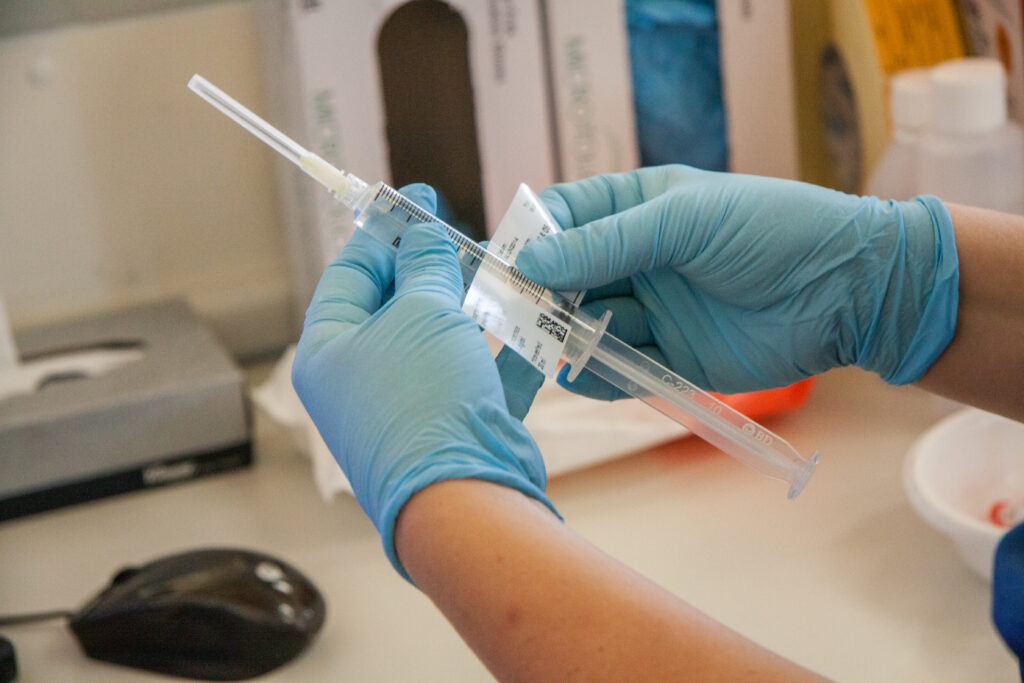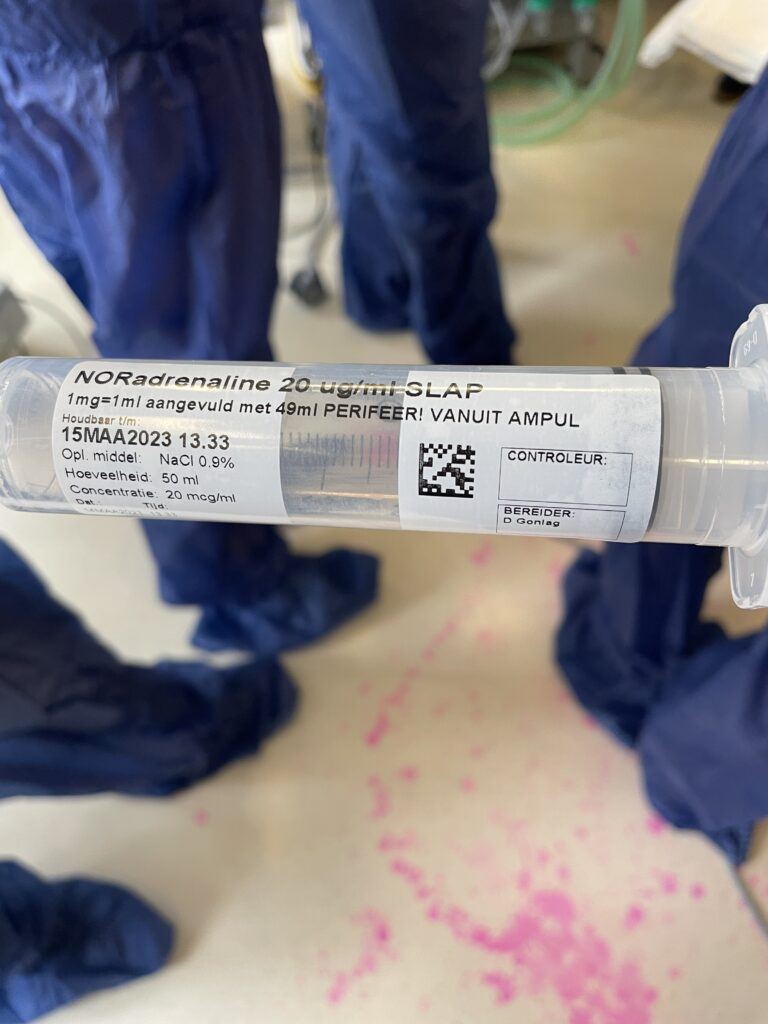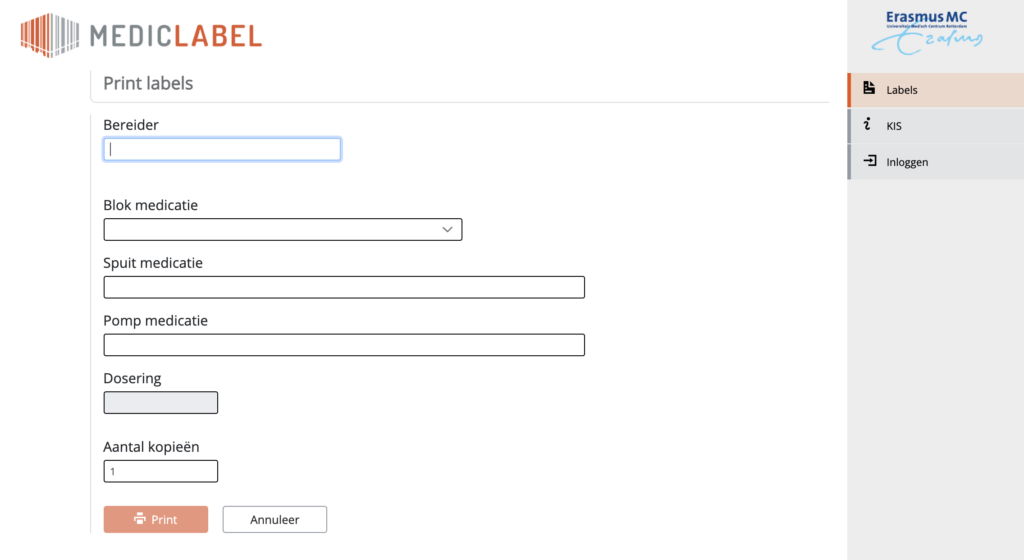Erasmus MC reduces the number of medication errors
Article by Judith de Witte & Dr. Nicole Hunfeld in Operationeel.
Operationeel, the magazine of the National Association of Operating Room Assistants (LVO), invited Judith de Witte, Sales & Marketing Manager at Type 2 Solutions, and Dr. Nicole Hunfeld, Hospital Pharmacist at Erasmus MC, to write an article about medication double checking.
This invitation was extended following their presentation at the Quality Day of the LVO.
Read the full interview below.
Introduction
The Central Medication Errors Registry (CMR) reveals that most medication errors occur with parenteral medications, which are drugs administered by injection. Nearly half of the recorded errors occur during the administration process.
Prescription errors are also frequently reported. To enhance medication safety, Erasmus MC implemented the Medication-Stickers OK project.
With success: it resulted in a reduction of reported medication errors.
Medication Double Check
Erasmus MC initiated a project in 2010 to facilitate medication checks: Medication Double Check OK.
Hospital pharmacist Dr. Nicole Hunfeld explains the dual rationale behind it:
“On one hand, it was because the VMS theme had started to gain prominence. We needed to comply with the VMS protocol (Safety Management System) and the double-check requirement mandated by the Health Care and Youth Inspectorate.
On the other hand, it proved challenging in practice, particularly in the operating room, to perform the double-check. It consumed a significant amount of time and was not very efficient. We were eager to improve it to enhance medication safety.”
Clear protocol
Every day, numerous intravenous medications are prepared for each patient in the operating room. A clear protocol for the preparation and administration of parenteral drugs reduces the likelihood of errors.
How can we ensure that the correct medication is given, in the appropriate dosage, prepared correctly, administered via the correct route, at the right time, using the correct method of administration, and to the right patient?

Dr. Nicole Hunfeld, hospital pharmacist at Erasmus MC.
Color-coded labels
Erasmus MC initially used pre-printed color-coded labels to mark the syringes. However, not all medications had available stickers, so an additional blank label was used instead.
All the necessary additional information was handwritten, making the label sometimes difficult to read, and assumptions were made based on the color of the label, leading to occasional mistakes.
High-risk medication
Presently, Erasmus MC employs Mediclabel software by Type 2 Solutions for high-risk medications in the acute care chain.
The administration label for these medications includes the following information:
- Quantity
- Solvent
- Preparation date
- Preparation time
- Expiration date
- Preparer’s initials
- Administrator’s initials
This administration label complies with the recommendations of the High-Risk Medication expert team, including the required double-check (the so-called four-eyes verification).
Mediclabel
“With Mediclabel, erroneous assumptions based on label color are a thing of the past,” says Nicole Hunfeld.
“We now use a standardized label, without colors. We chose Mediclabel because we could design the software together with Type 2 Solutions, ensuring it precisely meets our requirements and preferences.”
Quickly print labels
The label printed with Mediclabel fits various syringes. Staff members can quickly print labels for a standard set, also known as block medication. This can be done in the anesthesia or functional rooms for standard syringes.
One example of such a standard set is general anesthesia. When the staff selects this block, all labels for the medications used in general anesthesia are printed at once. The blocks can be defined within the Mediclabel software. The medication database is managed by the hospital pharmacist.
Double-check
After affixing the label to the syringes, the double-check is performed. A signature is added, and then the medication can be safely administered.
Transparent label
The label fits both small and large syringes. The transparent middle section allows the contents of the syringe to be always visible (see photo).
Additionally, the ends of the label do not have adhesive, preventing them from sticking together when multiple labels are placed side by side.
Automatic expiration calculation
The software automatically calculates the expiration date, which is displayed on the label. During the preparation of parenteral drugs, the Erasmus MC’s Quality Information System (KIS) can be accessed directly.
The software uses the correct concentrations listed in the KIS, ensuring a standardized workflow.
The label now precisely indicates how and with what the medication should be dissolved. The staff at Erasmus MC consider this a significant advantage.

‘Erroneous assumptions based on label color are a thing of the past’.
Barcode
An additional step in improving medication safety is the addition of the so-called Data matrix barcode on the label. The barcode on the label is scanned before administering the medication on the infusion pump.
Saves time
When the barcode is scanned on the medication pump, the pump recognizes it and reads the correct medication. This is linked to the electronic prescribing system, ensuring direct registration of all data.
This check is an additional layer of safety on top of the double-check during medication preparation. It replaces the manual double-check during administration. In addition to quality improvement, this also saves time for the staff.
Tall man lettering
Tall man lettering is used to enhance the readability of medication names.
This means that medication names are partially written in capital letters to distinguish them more clearly from similar medication names. Nicole explains, “So, wherever possible, we have alternated between uppercase and lowercase letters to trigger the correct reading.”
For example: PANtoprazole, miVAcurium, NORadrenaline.

‘The barcode replaces the manual double-check during administration’.
User-friendly software
Nicole says, “We noticed that the new system is very user-friendly. And because we already had a medication database, it was easy for us to involve other departments as well.
The system has now been implemented in the pediatric hospital and in interventional radiology, for example. So, once you start, you can easily roll out this system to other departments in the hospital.”
Training on the job
To enable all healthcare professionals to work with this system, on-the-job training was chosen.
Nicole says, “One person taught another. It’s so simple that it can be learned quickly. Furthermore, Mediclabel is described in the hospital-wide medication guideline, so you can also find information on how and where we use it.”

Mediclabel software (NL).
Reduction in error reports
“What it has brought us is the establishment of a safe system,” continues Nicole. “We also observed a decrease in the number of medication error reports. The system is so user-friendly that everyone can use it correctly right away. I find that especially important because it makes it safer.”
Tips for implementation
Here are five tips for those who want to start with medication double-check:
- Prepare yourself and familiarize yourself with the VMS protocol.
- Determine the scope of the project. Start small, preferably with one department.
- Select a partner for implementation.
- Develop an implementation plan together and form a project team consisting of anesthesiology, pharmacy, IT, and the implementation partner.
- Implement according to the plan, test, and document. Important: continue to communicate with all stakeholders.
Keep it simple
Nicole has a few additional suggestions:
“Think carefully about how the system can optimally support daily practice. Go through all the steps with the involved departments and the vendor, and continuously assess it against the VMS protocol.
Start designing the label in collaboration with anesthesiology and the hospital pharmacist. It is not easy to create a standard label design that meets all requirements and is also easy to use. Have different labels tested by users.
The system’s look and feel and user-friendliness are crucial for acceptance. Keep it as simple as possible.”
Would you like to know more?
Please leave your contact details and we will contact you.
Click on the image to read the case.





 Join us at ICT & Logistics
Join us at ICT & Logistics  Invitation Breugem Brewery tour
Invitation Breugem Brewery tour